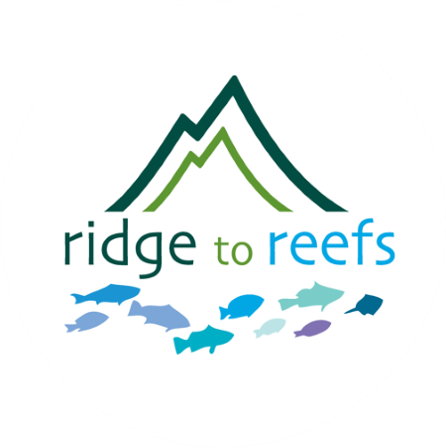Coconut Husks to Clean Water
2020 was a year full of challenges, and 2021 is sure to bring unknown challenges as well… but our response doesn’t have to be more of the same. We can use this time to take stock of our practices, as individuals and a global community, to reassess our direction, and build forward into a future that’s more socially and environmentally sustainable.
Ridge to Reefs is founded on the idea of building practices that are powered by natural processes to answer to environmental problems. But leveraging natural processes is only part of how we think about and build solutions. Where materials are sourced, and who contributes in the implementation of our projects, are crucial considerations to ensure a truly sustainable strategy.
These are ways to triage pressing environmental problems on the spot, developing solutions through local community engagement; using scientific methods to target problems; working with local, sustainably sourced materials to build solutions; and training local partners to maintain the infrastructure of these nature-powered systems. This is how we approach and build every project, and we believe it’s the way forward to a more connected, sustainable world.
One example of this process in action is illustrated by our work in American Samoa.
In American Samoa, many dry litter piggeries put out untreated septic runoff water to the local environment. To work correctly, these systems require woodchips, but the only few woodchippers on the island are either broken or inaccessible to village members. Instead of waiting around for a woodchipper to appear, we experimented with materials that were readily available to build a rain garden system that effectively captures and treats piggery waste. The biofilters were made by layering coconut husks, vetiver grass grown at the local community college, and biochar made with driftwood collected from the ocean and burnt by the village members right next to our project site.
This green infrastructure project, produced with local materials and constructed with the local community, is sustainable for the environment and supports local job creation. This system protects drinking water, community health, and the health of the nearby coral reefs. These reefs provide subsistence fishing, ecotourism, and contribute to the health of the ocean ecosystem.
Building locally sourced green infrastructure creates accessible solutions for the communities who need them most. Targeting these projects to address community priorities and training local partners to maintain them ensures their longevity and ongoing effectiveness.
The threats to clean water, healthy communities, and healthy oceans are many, but they can be mitigated and managed if we work together and work with the solutions nature has provided.
Take a deep, slow breath. Together, using nearby resources and leveraging one another’s strengths, we can progress toward a better world.



